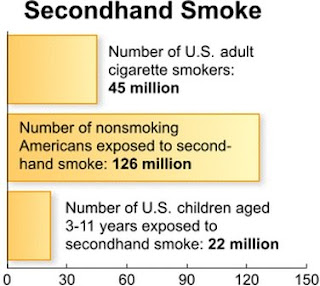CAREFREE, A.Z. - As science continues to show an increasing lack of access and poor outcomes among minority patients with cancer, the American Association for Cancer Research is working toward understanding the fundamental issues of trust and awareness among these populations. At the Conference on the Science of Cancer Health Disparities in Carefree, Arizona, the AACR will host a teleconference that highlights important strides in this area.
"As we continue to move forward with our scientific knowledge and medical treatments, we also need to understand if the potential benefits of what we are learning are being communicated effectively to those most at risk," said panel moderator Cheryl Willman, M.D., director and CEO of the University of New Mexico Cancer Research & Treatment Center and co-chair of the conference. "At best, the results are mixed."
"Intellectuals in medicine like to link all issues of mistrust to that study because it lets us off the hook for anything that might be happening today," said Williams. "This study shows that even groups without that history are showing a level of mistrust, so the problems must be more systemic than that."
#PR-6. Recruiting diverse patients to therapeutic trials: a comparison of three clinical settings
At the University of California San Francisco, Daniel Dohan, Ph.D., associate professor of Health Policy and Social Medicine, is trying to determine the most effective way to recruit minority patients into clinical trials.
The NIH Revitalization Act of 1993 mandates inclusion of minorities in clinical research, but actual recruitment has been problematic.
"Previous research has established that minorities often feel discriminated against, but we wanted to look at this issue from the clinicians' perspective," said Dohan. "What we found is that the incentives that are in place for clinicians are not effective."
Dohan and colleagues studied 10 oncology clinics in three different health care delivery settings: academic medical centers, community-based private practices and public safety-net clinics.
Minority recruitment was not well supported in any setting. In the academic and private practice setting, the culture supported minority recruitment, but there was no real incentive to recruit minorities. In the public setting, providers were motivated by a sense of justice to enroll, but the organizational structure was not available.
"In different clinics, different issues matter, so there is no one size fits all solution," said Dohan. "For example, in a public clinic, they may have translators, but not translators that are equipped to cross cultural barriers in clinical trials."
In private practice and academic settings, clinicians are often rewarded for recruiting patients into clinical trials, but they are not rewarded more for recruiting harder to reach minority patients.
"In a private practice where you have to watch the bottom line, the likelihood is that most of the recruitment is going to pharmaceutical trials, which tend to provide more incentive and do not necessarily require minority recruitment," said Dohan.
#B77. Cancer screening in older South Asian immigrants in United States
New data among South Asian immigrants confirms that cancer screening rates are low largely due a lack of knowledge about available services and the benefits of screening.
Abhijit S. Prabhughate, a doctoral candidate at the Jane Addams College of Social Work at UIC in Chicago, said more research is needed to understand the cultural sensitivities in this population.
"South Asian-Americans are an understudied group. More than 40 percent of the South Asian immigrants in our study did not have health insurance and little is known about their risk," said Prabhughate.
Of 331 total surveyed people, 84 percent were born in India and 14 percent were born in Pakistan. Although 57 percent of them had lived in the United States for a decade or more, only 65 percent had a regular family doctor.
These immigrants were likely to not be screened for breast cancer for the following reasons: not wanting to know if one had cancer, family not wanting the individual to get tested, embarrassment, fear of losing job, language difficulties, and not knowing where to get tested.
They were more likely to be screened if the family or friends encouraged it, or if their insurance paid for it.
#B75. HPV knowledge, attitudes and cultural beliefs among Hispanic men and women living on the Texas-Mexico border
A new study on knowledge, attitudes and cultural responses to the human papillomavirus among Hispanics found that both men and women had low levels of knowledge, significant misunderstandings, and cultural beliefs about HPV that may need to be addressed to decrease the risk of cervical cancer among this population.
Maria E. Fernandez, Ph.D., assistant professor of Health Promotion and Behavioral Sciences at the University of Texas Health Science Center at Houston, School of Public Health, conducted five focus groups in Brownsville, Texas, that included 30 Hispanic women and 11 Hispanic men. Women had a mean age of 41.3 years and men had a mean age of 38.8 years.
Researchers found that participants had little understanding about HPV and its role in cancer. Women believed that a diagnosis of HPV was a diagnosis of cancer and had fatalistic beliefs about the outcome of cancer. Women also thought that they would be reluctant to disclose their HPV positive status to their partners because they believed men would accuse them of infidelity. Men, too, initially attributed their partners' diagnosis of HPV to infidelity. Nevertheless, after a brief explanation about HPV etiology and transmission, men and women began to understand the ambiguity related to an HPV infection and believed that partners would generally support women as they sought health care for the infection."The results of this study suggest that understanding Hispanics' cultural norms and values concerning disease, sexuality and gender is essential to the design and implementation of successful interventions for the prevention and treatment of HPV and cervical cancer," said Fernandez. ###
The mission of the American Association for Cancer Research is to prevent and cure cancer. Founded in 1907, AACR is the world's oldest and largest professional organization dedicated to advancing cancer research. The membership includes more than 28,000 basic, translational and clinical researchers; health care professionals; and cancer survivors and advocates in the United States and 80 other countries.
The AACR marshals the full spectrum of expertise from the cancer community to accelerate progress in the prevention, diagnosis and treatment of cancer through high-quality scientific and educational programs. It funds innovative, meritorious research grants. The AACR Annual Meeting attracts more than 17,000 participants who share the latest discoveries and developments in the field. Special conferences throughout the year present novel data across a wide variety of topics in cancer research, treatment and patient care.
The AACR publishes five major peer-reviewed journals: Cancer Research; Clinical Cancer Research; Molecular Cancer Therapeutics; Molecular Cancer Research; and Cancer Epidemiology, Biomarkers & Prevention. The AACR's most recent publication and its sixth major journal, Cancer Prevention Research, is dedicated exclusively to cancer prevention, from preclinical research to clinical trials. The AACR also publishes CR, a magazine for cancer survivors and their families, patient advocates, physicians and scientists. CR provides a forum for sharing essential, evidence-based information and perspectives on progress in cancer research, survivorship and advocacy.
Teleconference Dial In: (888) 282-7404
Contact: Jeremy Moore Jeremy.moore@aacr.org 267-646-0557 American Association for Cancer Research
































